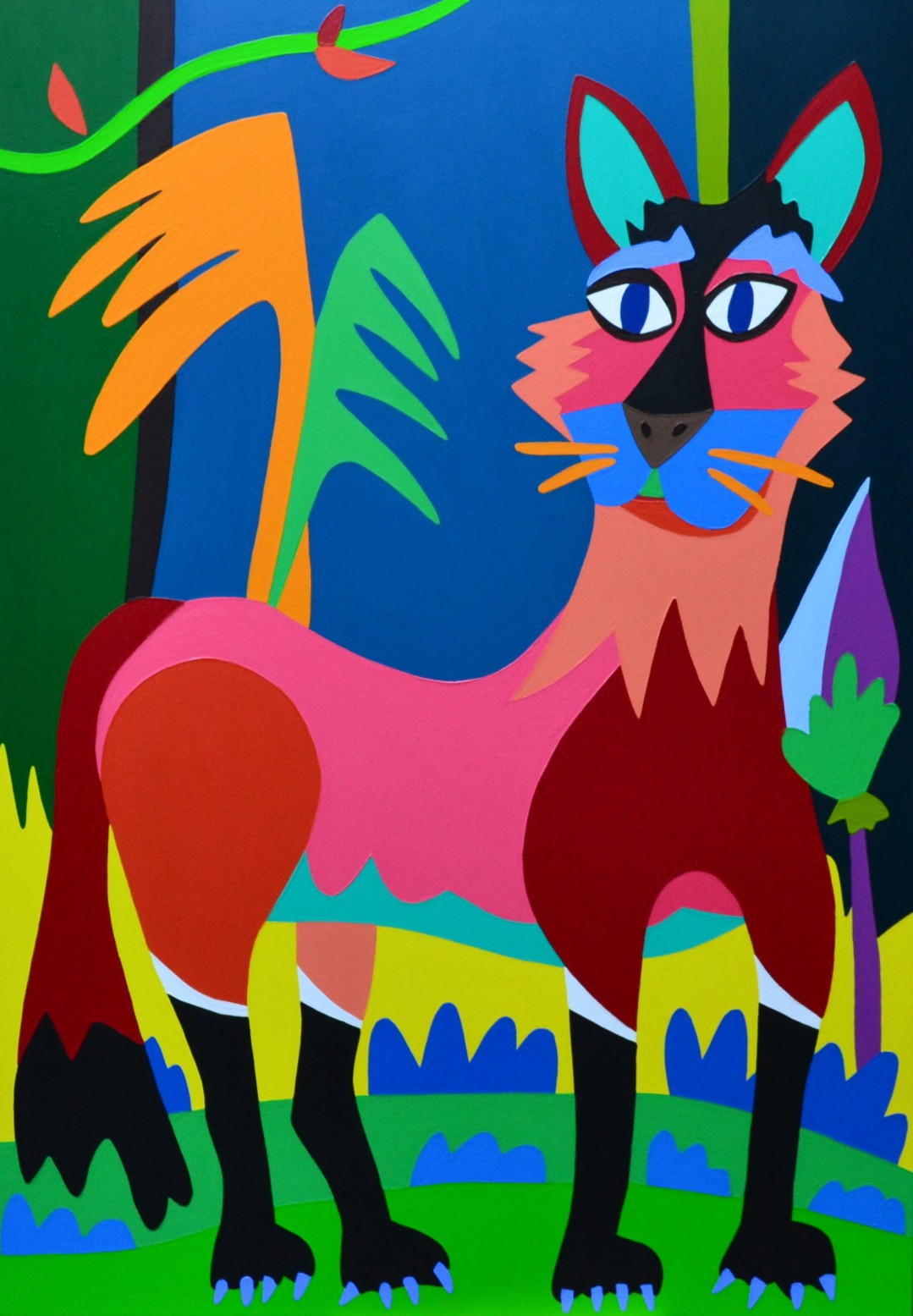The Great Wolf of South America.
The Aguará Guazú is the largest wild canid in South America. Its figure is unmistakable: long legs that allow it to reach high speeds, a slender body, reddish fur, and a solitary presence. Its scientific name is Chrysocyon brachyurus, and in Guaraní, aguará guazú means “great wolf.” It is also known as the maned wolf or “potrillo” (little colt).
Although it is a predator, its diet is omnivorous, including small mammals, birds, insects, and wild fruits such as the “wolf fruit.”
Native to the Paraná region, its range includes Paraguay, Brazil, and Argentina. This animal, a symbol of South American wildlife, has been severely affected by habitat loss due to deforestation and urban expansion.
Gonzalo Álvarez tells us:
“Today, the Aguará Guazú is considered a threatened, vulnerable species and is at risk of extinction. It has disappeared from vast natural areas, being displaced to other regions against its will.”
Through his artistic and educational work, Gonzalo affirms:
“To love and respect native species in our country, we must first get to know them.”
He adds: “It is essential to promote artistic projects with environmental content that encourage children to imagine and experience Nature…”
This fascinating animal is solitary and nocturnal, which makes its observation and census difficult. It has a keen sense of smell and forms pairs during the breeding season.
In Argentina, isolated populations have been recorded in Corrientes, Formosa, Chaco, northern Santa Fe, Córdoba, eastern Santiago del Estero, and southern Misiones.
Protecting the Aguará Guazú also means safeguarding the ecosystems we share. Learning about it, imagining it, and defending it is an act of commitment to the biodiversity that still inhabits our lands.

